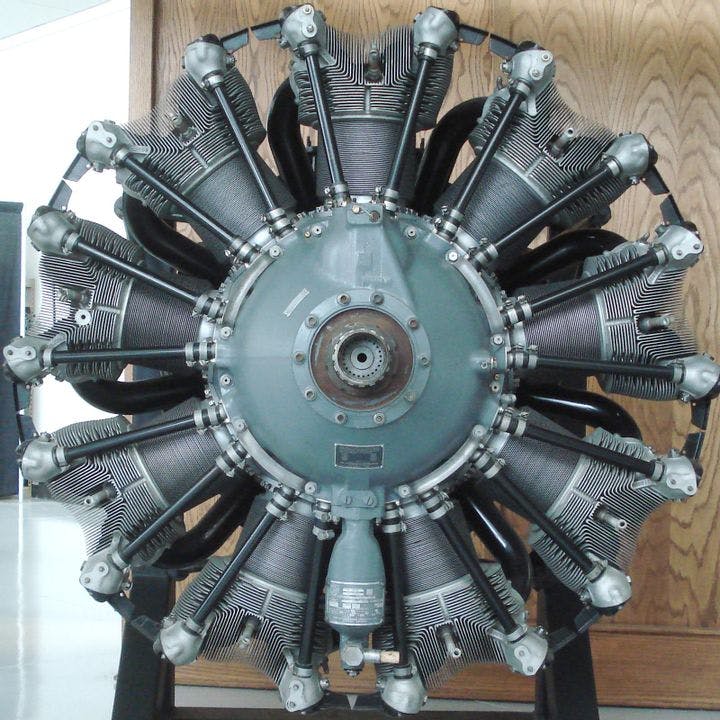Winter 2011
The Engines of Progress
– Mark Reutter
Gas turbines have received little attention, but have led to epochal shifts in world affairs.
When we think of global power, we think of political or military might or the clout of big corporations. We certainly don’t ponder horsepower, a unit of measure originally developed to compare the output of steam engines with the pulling power of draft horses. Vaclav Smil wants to change that. In Prime Movers of Globalization, he examines the role of diesel and gas turbine engines in the worldwide economy. Both convert the chemical energy of fuel into the mechanical power—horsepower—that drives objects through the air or across water.
These mechanical powerhouses are the Rodney Dangerfields of globalization, suggests Smil, an environmental scientist at the University of Manitoba and the author of some 30 books. Buried in the bowels of ships, diesel engines move billions of tons of foodstuffs, fuel, and industrial goods between continents. They also propel trains, trucks, and barges. Whirring reliably underneath the wings of planes, gas turbines make possible the flight of jetliners that transport more than five million passengers a day.
While these machines have received little attention, Smil writes, they have “led to epochal shifts in world affairs,” most noticeably the rise of China as the world’s manufacturing hub. A modern container ship such as China Shipping Container Lines’ Xin Los Angeles can transport 24 times more goods than the first container vessels could in the late 1950s. Moreover, it can be loaded and offloaded about 20 times faster than in the days of grappling hooks and sweaty longshoremen, by cranes that are themselves usually powered by diesel engines.
The diesel engine was pivotal in freeing land and sea commerce from the shackles of the thermally inefficient steam engine. German engineer Rudolf Diesel developed the theoretical design in the 1890s, but because the engine’s high-pressure system made unprecedented demands on the working parts, several decades passed before it gained widespread use. By then, diesel production had been commandeered by aggressive U.S. upstarts such as Cummins (trucks), Fairbanks-Morse (ships), and General Motors (locomotives).
The gas turbine for jet propulsion is another case in which technical improvements occurred incrementally after the first big leap of invention. Patented by both British and German engineers in the 1930s, the jet turbine was met with skepticism by military authorities and was not commercialized until a Boeing 707 (using a Pratt & Whitney turbo) took flight in 1954. Subsequently, turbine-powered jets rapidly replaced propeller-driven aircraft.
If diesels and turbines have made it possible to shuttle ever-increasing payloads of cargo and people among the continents, they have also changed commercial relations among nations. Consider that the manufacture of both engines was the exclusive preserve of Western nations (plus Japan) through most of their history. No longer. Nearly all large diesel engines designed by European companies are now made in Asia. This is in keeping with Asia’s rapid rise to dominance of ocean shipping, with China now accounting for nearly half of the traffic handled by the world’s top 20 container terminals.
Backpedaling from his overall claims for the beneficial nature of these two prime movers, Smil adds up the environmental costs of transporting more and more freight and passengers over long distances. In 1996, international shipping accounted for just 1.8 percent of the global carbon dioxide released by fossil fuels. By 2008, ocean shipping was responsible for about four percent. Aviation releases about half the carbon dioxide that shipping does, but jetliners emit greenhouse gases into a more environmentally fragile part of the atmosphere. Still, Smil sees no reliable or affordable alternatives. “Green power” has not found any niche on the high seas or in the air. For the foreseeable future, the global economy will rely on diesel engines and gas turbines.
Smil is a discursive writer who rarely finds a detail about engines that he doesn't want to share, which makes for heavy going at times. And he overplays his insistence that international trade agreements take a subordinate role to diesels and turbines as the drivers of globalization. In fact, both political power and horsepower shape the world’s commerce. One sets the rules, the other delivers the goods.
But his descriptions of the mechanics of modern shipping, as well as earlier waves of globalization propelled by steamships and tall-mast vessels, make for stimulating reading. By scrutinizing common yet often-overlooked technologies, Smil offers a fresh and useful perspective on world economics.
* * *
Mark Reutter is a fellow at the Progressive Policy Institute and a former Woodrow Wilson Center fellow. He edited Railroad History for eight years and is the author of Making Steel - Sparrows Point and the Rise and Ruin of American Industrial Might (1988, revised edition 2004).
Reviewed: "Prime Movers of Globalization: The History and Impact of Diesel Engines and Gas Turbines" by Vaclav Smil, MIT Press, 2010.
Photo courtesy of Flickr/Tom Magliery
